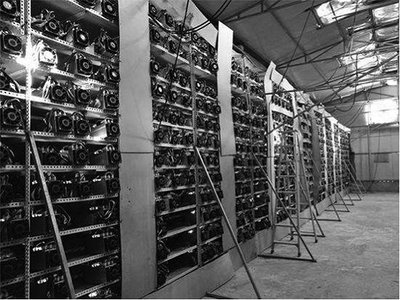As the cryptocurrency landscape continuously evolves, the quest for efficient and environmentally friendly Bitcoin mining solutions has become more urgent than ever. The year 2023 brings an influx of advanced mining machines specifically designed to reduce energy consumption without compromising hashing power. This article dives deep into the cost comparison of the best eco-friendly Bitcoin mining machines, highlighting how miners can balance profitability and sustainability in an increasingly competitive market.
Mining rigs, also known as ASIC (Application Specific Integrated Circuit) miners, are the backbone of Bitcoin mining operations. Traditional mining rigs often come with high power usage, spurring criticism regarding the environmental footprint of Bitcoin mining. Today’s eco-friendly miners utilize innovative chip designs and energy-saving technologies that significantly lower electricity consumption. Among these, models featuring the latest semiconductor fabrication processes—such as the 5nm or 7nm lithography—stand out, enabling impressive hashing efficiency measured in joules per terahash (J/TH).

When selecting a mining rig, price is a critical factor, but so is the return on investment (ROI), which depends on hashing power, energy efficiency, hardware durability, and the cost of electricity. The Bitmain Antminer S19 XP Hydro series, for instance, incorporates water-cooling technology to maintain optimal temperatures, enhancing longevity while minimizing noise pollution and energy waste. These machines, though priced at a premium, often deliver superior performance per watt, reducing overall operational costs. Conversely, budget miners like MicroBT Whatsminer M50 focus on striking a balance between initial cost and energy savings, making them more accessible to small-scale miners.
Environmentally conscious miners also consider hosting solutions as part of their strategy. Mining machine hosting services enable clients to deploy their rigs in data centers designed for maximum energy efficiency, frequently powered by renewable energy sources such as hydroelectric, solar, or wind power. Compared to DIY setups, hosted mining farms can dramatically reduce the carbon footprint and improve economies of scale. For companies invested in large-scale Bitcoin mining, partnering with eco-friendly hosting providers adds another dimension of sustainability without compromising on uptime or network security.

Beyond Bitcoin, the ecosystem of cryptocurrencies includes tokens such as Ethereum and Dogecoin, each with distinct mining algorithms and hardware compatibility. Ethereum miners, for example, have historically relied on GPUs (graphics processing units), yet with the advent of Ethereum 2.0 and its shift toward proof-of-stake, mining profitability and environmental impact will undergo a sea change. Dogecoin mining, often piggybacked on Litecoin’s Scrypt algorithm, requires different hardware considerations where ASIC miners specifically optimized for Scrypt shine. While this article centers on Bitcoin, understanding the nuances across cryptocurrencies offers perspective on the eco-efficiency spectrum in the broader mining industry.
Meanwhile, exchanges play a pivotal role in shaping the crypto mining market. More exchanges are listing tokens tied to green initiatives and carbon offset projects, encouraging miners to adopt cleaner technologies. Some crypto exchanges have even launched dedicated futures contracts and investment products aimed at eco-conscious investors, fostering a feedback loop where sustainable mining teams can capitalize on market favorability. This development introduces fresh complexities when calculating ROI, as miners might benefit from incentives tied to environmental performance, beyond straightforward hash rate and energy costs.
The act of mining itself is a relentless contest against time and difficulty adjustments, pushing miners to constantly optimize their setups. Investing in the best eco-friendly hardware is not just a matter of ethics but a strategic decision that influences market placement over months, not days. The cautious miner weighs upfront costs against potential future strikes of energy regulation, carbon taxes, and the volatility of cryptocurrency prices—making eco-efficient Bitcoin mining machines a hedge against regulatory risks.
Ultimately, the best eco-friendly Bitcoin mining machines in 2023 embody a delicate harmony of cutting-edge technology, operational savings, and environmental stewardship. New entrants on the market, including startups experimenting with AI-accelerated hash computations and hybrid cooling methods, hint at an exciting future where mining and sustainability are no longer at odds. As the blockchain revolution marches forward, responsible miners are poised to pave the way for an industry that not only mines profit but also preserves the planet.
Leave a Reply